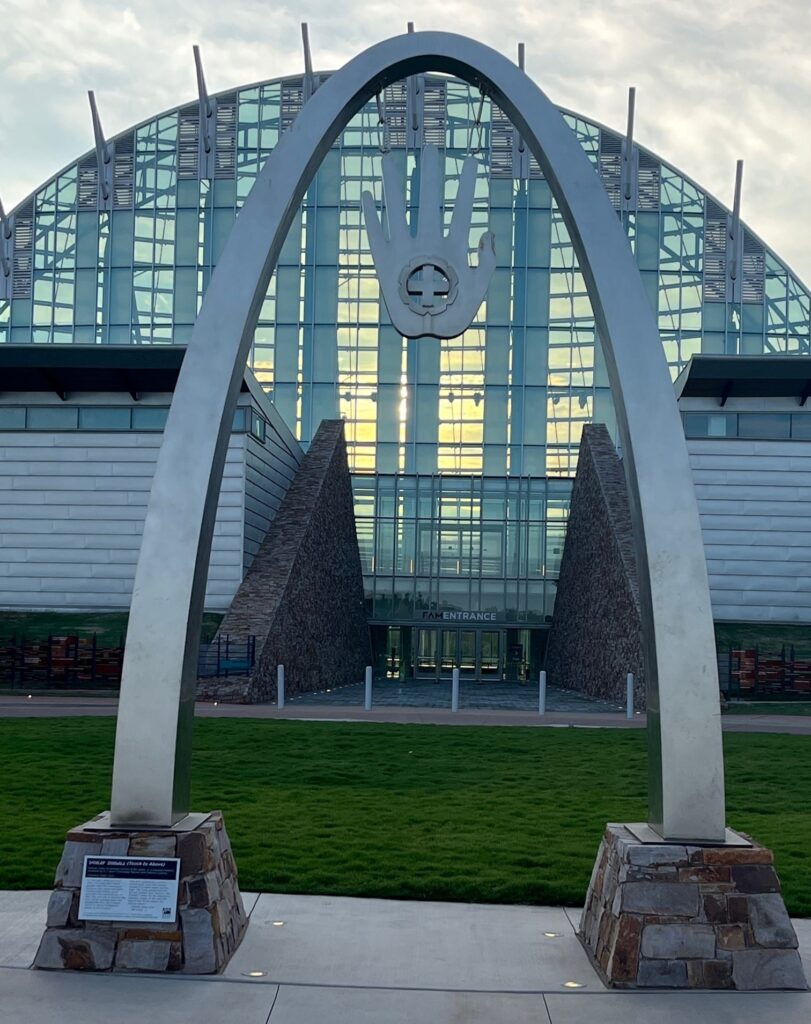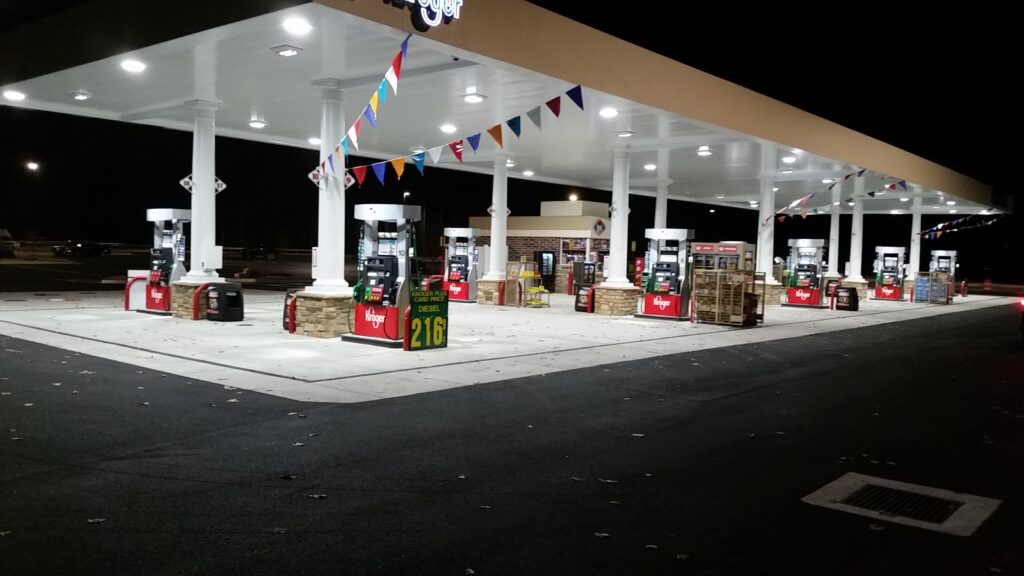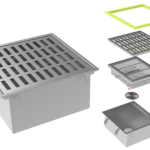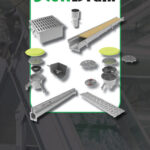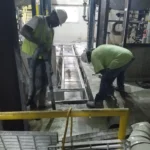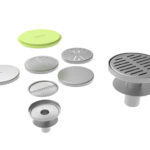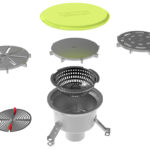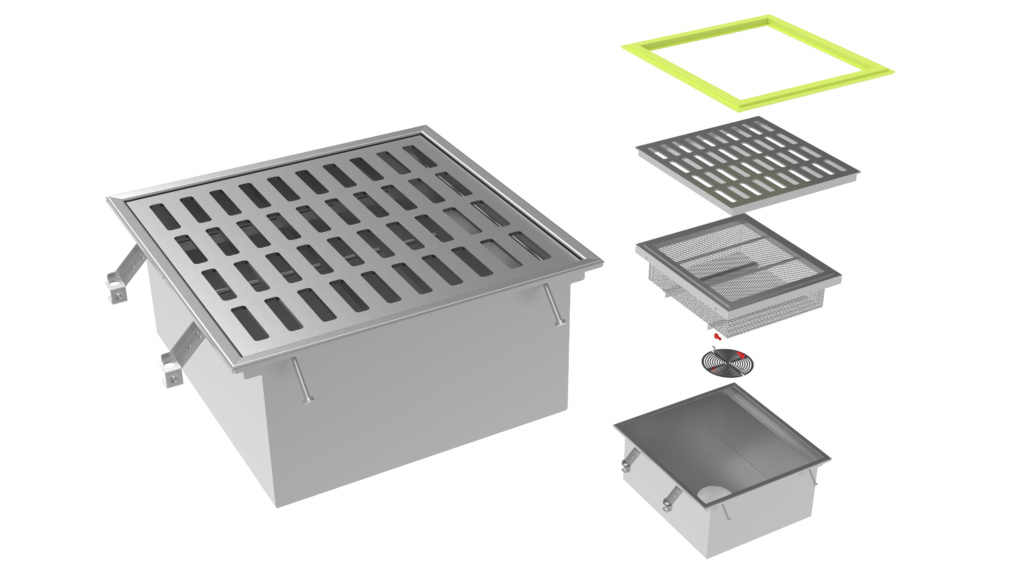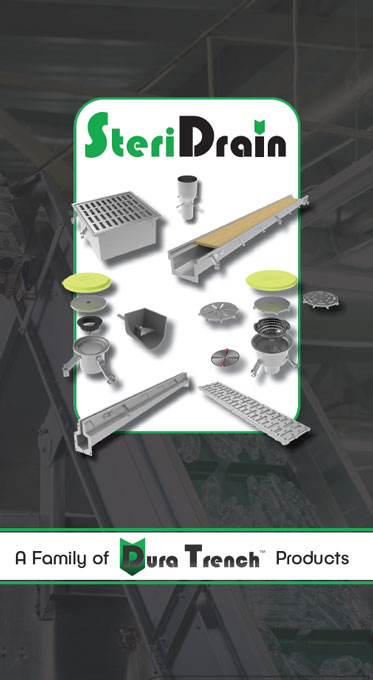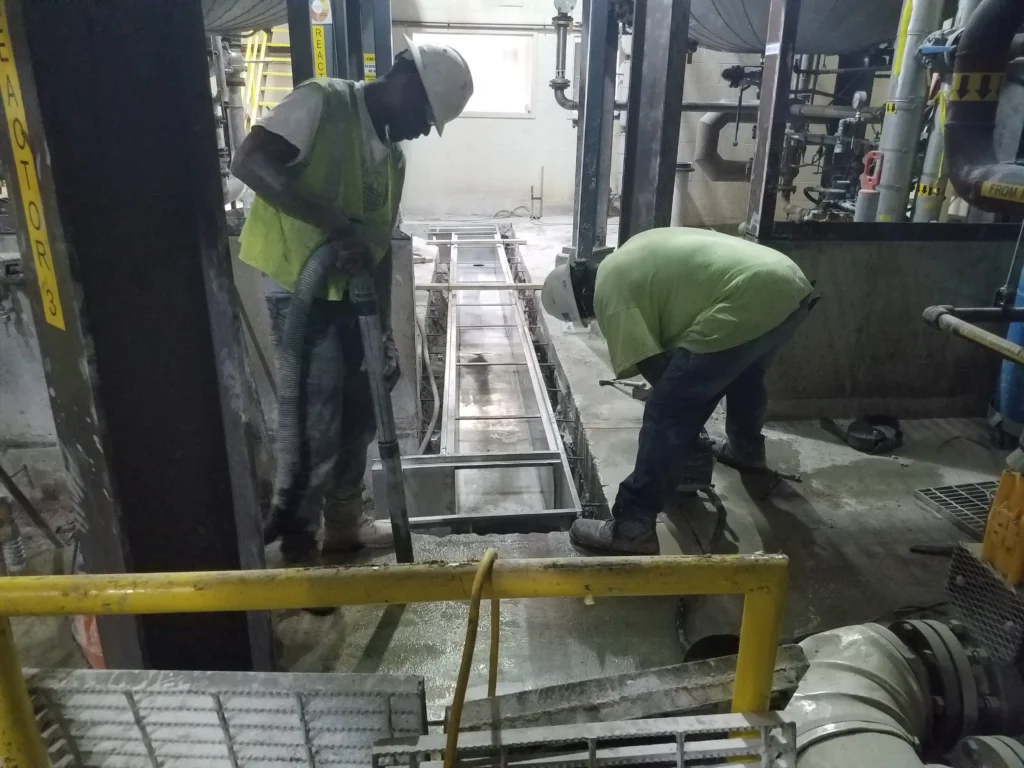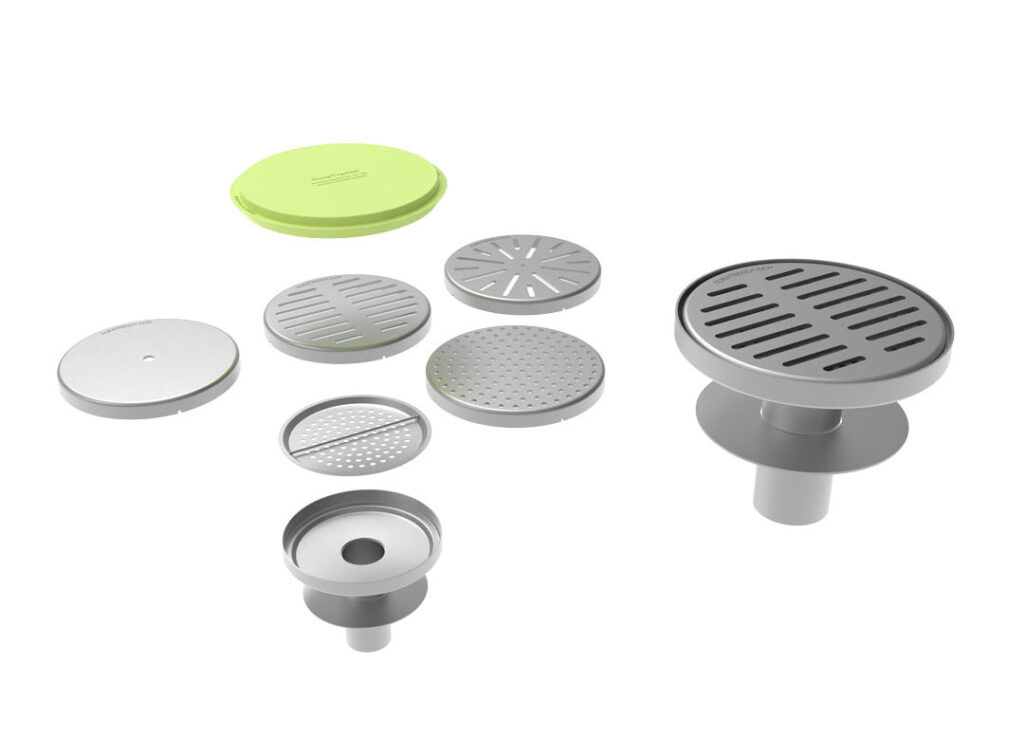If you are installing drainage at your home or your business, you have probably realized that there are a lot of different drain styles that you can select for your needs. The right drain for each unique area on your property can vary, but trench drains are a common choice for many reasons. These are some of the most affordable drains to installing and they offer longevity with limited maintenance needs.
When you operate a manufacturing location or a food-processing business, you might need access to drains that will be very effective and safe to place in workspaces, which is one of the key areas where trench drains can shine. Trench drains are also really effective for use near pools and fountains and along walkways and paths.
Knowing more about trench drain styles can help you to figure out which kind of trench drain you want to utilize for your unique needs.
What is a Trench Drain?
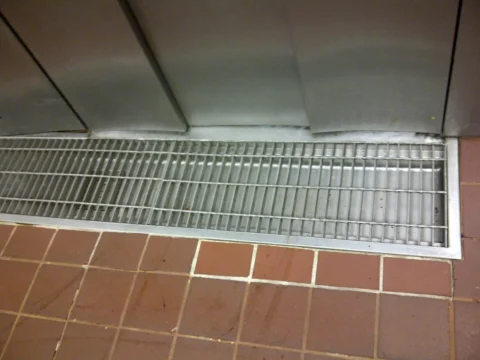
Trench drains are simple to install and easy to maintain because of the shape of the drain itself. These drains are also known as channel drains, and they are made to offer a long, carefully sloped surface inside of a pre-dug trench that collects and drains off water from work areas, walkways, fountains, and swimming pools.
This kind of drain is made to be protected with a drain cover that can be designed in many ways to handle the kind of traffic that must pass over the trench, as well as the volume of water that needs to be allowed to flow into the trench. Trench drains can be made of many different materials and might also be reinforced to be durable when driven over by heavy vehicles and daily traffic of all kinds.
The common materials that trench drains are made of are as follows:
· Plastic
· Galvanized steel
· Cast iron
· Polymer
· HDPE
· Stainless steel
· Concrete
The grates that are placed over the trench can be made of all of these materials as well. Some great styles can be made to be embellished with designs of various kinds as well if this need is important for the aesthetics of the area where the trench drain will be installed.
The areas where these drains are commonly used are as follows:
· Walkways
· Roadways
· Near swimming pools
· By fountains
· In manufacturing locations
· Breweries
· Loading docks
· Paths
Trench drains can be used in garden locations, backyards, your home, and your business. They are also common in places like airports, parking lots, and common areas around places like malls. Trench drains are fit for a wide array of applications and are perfect for the removal of high volumes of water as well as the elimination of chemical wastes or highly acidic liquids.
Trench drains can be readily connected to storm sewers, as well as existing drainage on a property. Since there are so many ways to connect these kinds of drains to existing drainage, they are also a great choice if you need to use catch basins, collection tanks, or other drainage solutions in your location as well.
What Are the Benefits of Trench Drains
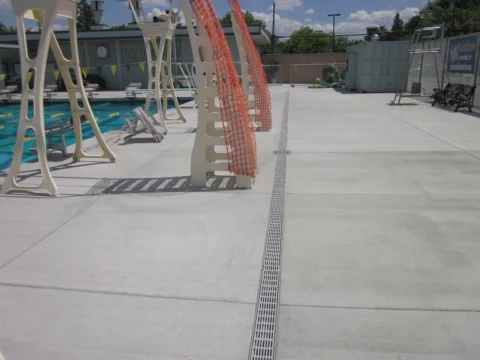
Trench drains offer many benefits to those who install them at their business location or their home. These drains are affordable and easy to install, and they are also likely to hold up to years of use with ease. You will not need to do much maintenance to keep your trench drains in good condition, and you can easily pick grate covers for your drains that will keep the risk of slips and falls or tripping hazards to a minimum.
Trench drains are also really good for the environment as they prevent standing water that can lead to erosion, and they also collect the kinds of runoff that can lead to toxicity in water supplies that might impact wildlife and human water resources. You will find that your trench drains can keep your yard from being impacted by standing water, and they can keep walkways and parking lots from being flooded and unsafe for use. There are so many reasons that trench drains are the preferred drainage solution for most needs, and you will be able to access all of these benefits and more when you select the right trench drain style for your situation.
Choosing the Right Trench Drain
There are some factors that you need to keep in mind when you are looking at trench drains for your business or personal property. Keeping these factors in mind can help to guide your choice related to the style of the trench drain, the materials it is made of, and the grate design that is needed to help make your trench drain operate smoothly and effectively. Many different considerations can impact your drain style choice, and you will need to be sure that you have thought of all of these variables before you select the trench drains that you are going to install at your property.
1. Examine the Trench Drain Flow Rate
One of the biggest factors that can impact your trench drain style choice is the water volume that needs to be handled in the location where you are planning drainage. This consideration can impact an outdoor drainage situation or an indoor drainage installation. You will need the drain that you select to be built for the maximum water flow that needs to be removed at any given time. While this max flow situation might only happen once in a while, you still need to be sure that the trench drains that you install are made to take care of this maximum need when it arises.
The drain itself needs to be built to handle the water volume in question, but you also need to consider what kind of drain covers or grates you are using as well. The gratings and covers for your drains have a significant impact on the water flow that is allowed into the trench drains at your location. Even if your trench drain itself is made to handle maximum water flow at peak times, the gratings that you pick can make it impossible for the drain to collect all the water that needs to be removed during peak times.
There are some guidelines that you can remember that will help you to pair the right size drain with the correct drain covers for peak flow hours. You should remember that a ½ inch slot style opening will allow 11 gallons per minute of water to flow into the drain. A 1 ¼ inch slot opening can allow 27 gallons of liquid per minute per foot of slot.
The style of the openings in the grates and drain covers that you use will also impede or allow fluids to flow into the trench drain below at different rates. All of these considerations need to be used to create the right trench drain plan for maximum water flow times. The rest of the hours of the day or seasons of the year will be covered with ease by a trench drain that is made to take care of peak flow times properly.
2. Before Installing a Trench Drain, Check the Drain Size
The size of the drain that you choose has a lot to do with the maximum flow rate that needs to be handled by the drain, but you will also need to think about the kind of material that you are installing your drains in. Trench drains come in various pre-made sizes ranging from 4” to 12” wide, and these different widths can be complemented with custom drains for locations with more unique needs. The kind of soil you have can impact the size of the drain that can be supported in your area, and you might need to be sure that you can reinforce larger drains when the surrounding soil materials are not ideal for large drain installations.
Drain size will also have a lot to do with what kind of pressures the drains can withstand related to traffic passing over the drain. If you are installing drains in a location that will be exposed to vehicle traffic, you will need to be sure that your drains are the right size and reinforced in the right way to handle this kind of demand. The load capacity is discussed in the next section, and it is a key aspect of identifying the right size drain for your unique situation.
3. Before Deciding on a Trench Drain, Determine Its Load Capacity
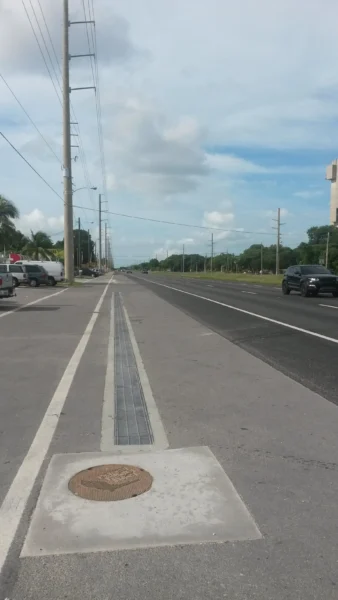
One of the strengths of trench drains is that they can be installed in walkways, roadways, and workspaces with ease. These are drains that can be reinforced to be strong enough to tackle the weight of heavy equipment and foot traffic as needed. You will need to know what kind of weight capacity your trench drains need to handle each day before you choose the drain style for your installation. Since trench drains can be reinforced to handle even the heaviest traffic from vehicles and more, you should not have any trouble finding the right trench drain style for this need.
The grates you select for your trench drain will also need to be rated for the traffic the trench below must support. You might need to pick reinforced gratings or gratings that are made of metal to be sure that your drains will hold up to the daily demands of your location. Foot traffic usually does not require that any specific trench drain style or grate style is used, but you might still want to select trench covers that can be screwed down for security and to prevent tripping hazards.
There are many ways that load capacity can impact the design of your trench drain installation, and you need to think about all the kinds of traffic that will be passing over your trench drains each day carefully when you are planning your installation.
4. Test Chemical Exposure of the Trench Drain
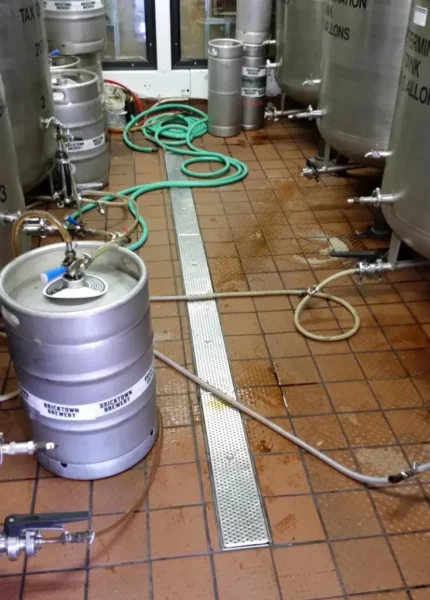
Some working environments can expose the trench drains that handle water flow to chemicals that might break down specific drain materials. These areas might need to have stainless steel, or reinforced trench drains installed to handle this need. There might also need to be catch basins and collection points that are set up to tackle this kind of runoff without breaking down.
Breweries often require these kinds of trench drain solutions due to the acidic nature of the runoff from brewery processes. These kinds of liquid wastes can break down plastics and other polymers, which makes the trench drain installations in these locations limited to stainless steel and other kinds of materials that can handle this kind of exposure.
Trench drain covers can be made to be tough enough to tackle chemical runoff as well, and this is often the recommended kind of grate for locations where drainage solutions are exposed to chemicals daily. Make sure that you are aware of these demands on your drainage installation before you install the wrong kind of drains and are forced to replace damaged sections of the drain due to chemical exposure damage.
5. Check the Heat Resistance of the Trench Drain Before Choosing
Just like with chemical exposure, some materials are better at handling heat and the stresses that they can place on trench drains. Even if you are not operating a business location that uses heat to process products, you might be installing drains outside or in locations that get quite warm during the summer months. Hot liquid runoff can also cause drains to be damaged if the trench drain is not made for this kind of exposure.
No matter if the heat exposure to your trench drain is from hot liquid runoff or environmental heat, you need to be sure that you think about this when selecting drain materials for your installation. Even if you only have to install a small section of your drainage system with heat-resistant trenches, this is a worthwhile consideration to have in mind to prevent drainage failures. This can be a common oversight when it comes to areas like loading docks or processing floors, and you will avoid added expenses if you take care of this consideration properly from the start of your trench drain installation process.
6. Only Choose Trench Drains That Are Easy to Maintain
Trench drains are already one of the easiest drain styles to care for since they are simple to keep free of debris due to their grate covers and the shape of the trenches themselves. However, in some kinds of environments, drains need to be cleaned daily to prevent bacterial growth and other health risks from becoming an issue.
When maintenance is a regular need for your trench drains, you need to be sure that you pair the right size trench drain with the correct grating style to make access to the trench drains easy and simple. There are specific tools that are used to sweep out and clean trench drains properly, and you will probably need to get these items to have on hand as well.
Some other kinds of drains cannot be opened up to be cleaned, and this can make them less than ideal in situations where cleanup processes are best done regularly and by hand. Trench drains will answer this need easily, but you will need to be sure that you think carefully about the covers that you place over the trenches to make access to the drains simple and safe for those working to do upkeep on your drainage system.
7. Only Select Trench Drains That Can Hold Up Heavy Weight
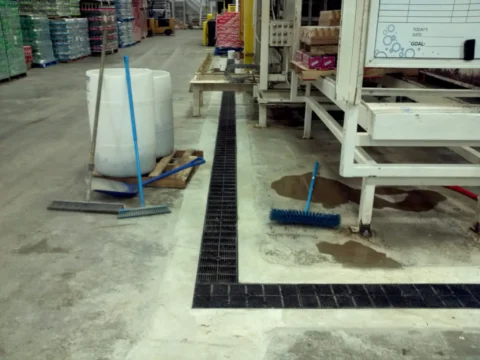
The kinds of gratings and covers that you place over your trench drains can have a big impact on the safety of the area in which they are located. You will need to be sure that you have thought about all of the kinds of traffic that need to pass over your trench drains before you select the kinds of gratings that are going to cover the drains. You might need to use ADA covers if the location is open to the public, and you could also need to be careful about heel-proof surfaces so that no one gets their foot caught and falls.
When wheeled traffic passes over your trench covers all day long, you will probably also need to select covers that can be screwed down so that they do not pop open when vehicles pass over them. These different considerations can go a long way toward preventing slips and falls and other kinds of accidents without impacting the ease of access to the trenches below for daily cleaning or to remove clogs.
The installation of trench drains is simple when it comes to creating the right slope, so you should not have standing water near your trench drains, no matter what the water flow might be at peak times. Even ADA-compliant drain covers are made to handle the maximum flow of your drainage needs. These design features will all work in your favor when you install a trench drain system, but you will need to be sure that you have selected the right drain size and the right cover arrangement to prevent issues that might cause safety around your drainage areas to be impacted negatively.
8. Before Picking Up the Trench Drain, Make Sure You’ve Asked About Its Lifespan
Trench drains can last for years when properly maintained and cared for. Most trench drain failures are related to incorrect installation or improper material selection related to the kinds of activities and liquids that the drainage installation is exposed to. The lifespan of your drain will be easy to protect if you have created the right drainage solution for your unique location. Making sure that you keep all of these other variables in mind will help you to create a drainage solution that will last for years and work perfectly throughout its usable life.
Making sure you have picked the right drainage covers can make it simple to provide the upkeep that trench drains need to be used for years without issue. You will want to be sure that your employees or you can provide the upkeep that is needed to keep your drains from being clogged or damaged if you want your drainage solution to last for years into the future.
How do I Know What Trench Drain is Right for My Needs?
If you are not feeling confident in your ability to determine which kind of trench drain is right for your unique situation, you need to make sure to work with a drainage installation team that is familiar with this kind of drain type. You will find that there are probably many more options for your drainage solution needs than you realized, and you might need some assistance to identify which kinds of drains are the most ideal for your drainage requirement and peak flow needs.
Trench drain systems can usually be ordered premade, and you can install these drains yourself if you have the skill, but many people opt to have an expert installation team handle the drainage installation process. Many considerations need to be handled correctly, and this might be a job that is outside of your comfort level.
Thankfully, planning out your trench drain system and installing it is usually not going to break the bank, especially if you work with a skilled trench drain installation company that focuses on this kind of drainage installation project. Trench drains are easy to make and install, so even custom drainage solutions of this type can be affordable when compared to other kinds of drainage. Always make sure that you do not try to create a drainage solution if you are not sure about how to take care of this kind of job yourself. Even the best trench drain materials can be damaged by being installed incorrectly, and you will want to avoid this outcome.
Working with a skilled installation team can take all the pressure off of you as the property or business owner, and you will be left with a beautifully-installed and ideal drainage solution that can tackle all of your needs with ease.

